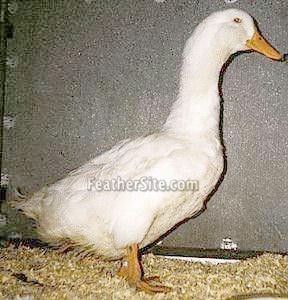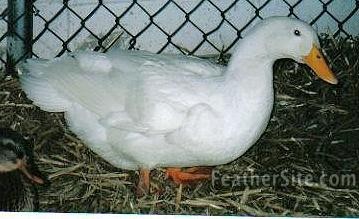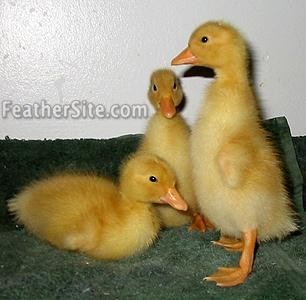<!--<!--<!--[if gte mso 10]> <mce:style><! /* Style Definitions */ table.MsoNormalTable {mso-style-name:"Table Normal"; mso-tstyle-rowband-size:0; mso-tstyle-colband-size:0; mso-style-noshow:yes; mso-style-priority:99; mso-style-qformat:yes; mso-style-parent:""; mso-padding-alt:0cm 5.4pt 0cm 5.4pt; mso-para-margin-top:0cm; mso-para-margin-right:0cm; mso-para-margin-bottom:10.0pt; mso-para-margin-left:0cm; line-height:115%; mso-pagination:widow-orphan; font-size:11.0pt; font-family:"Calibri","sans-serif"; mso-ascii-font-family:Calibri; mso-ascii-theme-font:minor-latin; mso-hansi-font-family:Calibri; mso-hansi-theme-font:minor-latin;} -->
<!--<!--<!--[if gte mso 10]> <style> /* Style Definitions */ table.MsoNormalTable {mso-style-name:"Table Normal"; mso-tstyle-rowband-size:0; mso-tstyle-colband-size:0; mso-style-noshow:yes; mso-style-priority:99; mso-style-qformat:yes; mso-style-parent:""; mso-padding-alt:0cm 5.4pt 0cm 5.4pt; mso-para-margin-top:0cm; mso-para-margin-right:0cm; mso-para-margin-bottom:10.0pt; mso-para-margin-left:0cm; line-height:115%; mso-pagination:widow-orphan; font-size:11.0pt; font-family:"Calibri","sans-serif"; mso-ascii-font-family:Calibri; mso-ascii-theme-font:minor-latin; mso-hansi-font-family:Calibri; mso-hansi-theme-font:minor-latin;} </style> <![endif]-->
Pekin duck, or Long Island duck (Anas platyrhynchos domestica), is a breed of domesticated duck used primarily for egg and meat production. It was bred from the Mallard in China

Nice Pekin Drake

Pekins, female

HISTORY
This breed was imported from Pekin into both England and the United States, in the year 1873, and has most marked characteristics. One of these is the strong yellow blood. Both legs and bill are deep orange colour, and the plumage a kind of ferret-white, with a strong canary tinge, which becomes stronger still in the underfeather. The legs are set on rather far behind, which gives an upright or Penguin carriage. Another feature is the boat-shape of the long and deep keel, which, with a fulness of rump and peculiar turn-up at the tail, irresistibly suggests the shape of an Indian birch canoe. Yet another peculiarity lies in the fact that the duck is, as a rule (though there are exceptions), a non-sitter and prolific layer. At one time birds were shown with white plumage and pale bills, but which, no doubt, were crossed with Aylesbury; and the canary tinge is now fully recognized
This is a most useful duck, but does not seem to be bred to nearly as high a standard in England as in America, where it is the breed universally used now by the duck-farmers. In England a large-looking bird often weighs no more than 8 lb., though large specimens are exhibited of greater weight, and some breeders average the eggs at 8o per annum, others less. On the American duck-farms birds of l 1 lb. and more are quite common, in adults, and the average in eggs from many hundred ducks is reported from three of the largest farms as 135, 140 and 145 per duck. But these are the results of breeding and selecting the bird, on a large scale, as the Aylesbury is bred with us
The Pekin grows fast and early, and in America is expected to weigh 5 lb. at eight weeks. It is a little wild or free in habit, and does not fatten well in small pens; hence the larger American yards or pens mentioned in the above remarks. The flesh is particularly free from grossness. We are inclined to believe that the greater weight and growth in America as compared with England, is partly owing to the recognition of its freer habits; but still more largely to the use of green food and bran along with Indian meal, which probably keeps the digestive organs in more active exercise


Pekin ducks to have a character all of their own. For a heavy duck they are quite active and very gregarious. That's not to say they are as busy as a Runner or a Magpie but mine are continually on the move searching in long grass and dabbling in the mud.....oh! how they like mud ; just like any other duck.
Unfortunately the feather type on Pekins is different from most other ducks as it is so soft and fluffy and not so tight. This often results in them losing feather quality quickly in bad / muddy weather and clean fresh bedding is a must. Feather quality can be improved by good feeding during the moult.....I like to feed extra vitamins ( not extra protein) and plenty of grass meal.
Breeding and Fertility .......One drake can take up to five ducks and breeders worry about fertility if it drops below 75%. Ducklings grow on well without too many problems except from the occasional sticky eye and lameness; normally both due to too hot and dry summers.......both are easily rectified.
Selection of Stock, ......like any other self coloured bird is not easy for the inexperienced eye. Until 8 /10 weeks I don't even try. First , discard any bird with black spots on their bill . Next too long a bill.... a definite fault to avoid as is little rise from the base of the bill to the top of the head. Select a bird with a domed head and short stout head... much like a call duck. The next round of selection is not very easy and takes time. Next to go are the tall slim types, any with keels, rear end too high off the ground and those with too low a carriage. Also, prefer a duck with a strong tick in their tail and no prominent shoulder.Birds which meet these criteria, keep over winter, and don't breed from or select breeding stock until after they have finished moulting at about 18 months.
Despite being very demanding in selection normally keep between 15 / 40 adult birds just because of their appeal. White ducks are eye caching especially Pekins with their upright penguin stance and wobbly walk . Their jaunty tail, high set sparkling eyes, and chatty nature and almost regal appearance.

Names
Pékin Américain in France. Pechino Tedesca in Italy. The similar Pechino Americana is our Commercial X Aylesbury. Also known as "Long Island duckling" in reference to the first 9 ducks imported to Long Island in 1873
Country Of Origin
China as in other vertically designed waterfowl
Purpose
Eggs..Meat....a good utility duck. These ducks are ready for butchering at 6 to 8 weeks of age and produce more meat that is desirable for eating than other breeds of duck. Its meat is very tender and mild and well-suited for many menu options. 174 grams (about 6 ounces) of Pekin duck leg meat :-* Calories: 310g * Total fat: 10g * Cholesterol: 183mg * Carbohydrates: 0 * Protein: 51mg
Egg Colour
The eggs weigh 70g and are white
Egg Numbers .............80 /100 .. .the American Commercial Pekin will lay an average of 200 eggs per year
Weights; 9 to 12 pounds
Breed Tip
****Open feathered so more likely to get mites/ticks/fly strike...watch in extreme humid heat for signs of distress. If found treat with sheep product such as Spot-on/frontline applied with a cotton wool bud to the base of the skull on the shoulders as all OP's are dodgy. Weight can produce foot problems from bumble foot to frostbite
Flying
.like a brick . . Rarely flies a good back garden all rounder; A waddler rather than a walker

PEKIN;.........Breeders.
Julie Christopher, Wales 07790 065 553
Tom Davis, Essex 07969 246 455
Ryan Liggett, Co. Armagh 02838 840 978
German style
Colin Murton, Hampshire 01428 751 408
Guy Richardson, Armagh 02838 841 134
Howard Walmsley, Lancashire 01235 790 425
Hatching
Pekin duck embryos take around 28 days to develop in the egg at 99.5°F (37.5°C) and 55-75% humidity. A heartbeat can usually be seen by the third day of incubation when candling the egg
The eggs must be regularly turned during incubation. This occurs in nature when the female duck shifts her position while sitting on the eggs. For artificial incubation, machines are available which will constantly turn the eggs.
When being artificially incubated, the eggs are moved to a "hatcher" three days before they are due to hatch. This has a slightly lower temperature and higher humidity which increases the survivability of the hatchlings while their protective down develops.
Compared with other birds, duck eggs are relatively easy to hatch as they are very forgiving of variations in temperature and humidity.
Hatchlings and young ducklings

Pekin ducklings from Europe
Pekin hatchlings have bright yellow plumage with an orange bill, shanks, and feet.
Hatchlings should not be given free access to swimming water unless they have been hatched naturally by other ducks. The feathers of a young duckling are not sufficiently developed to properly protect them for extended periods in the water and they do not produce enough preen oil to waterproof this plumage. In the wild, a mother duck will monitor the time her ducklings spend in the water as well as supplying additional preen oil to supplement what is produced by the hatchlings.
Sexing
It can be difficult to determine the sex of the young ducklings due to the lack of external genitalia or other differences. Venting is one common method. This entails gently squeezing the duckling to cause feces to be expelled, which forces the cloaca to open slightly, permitting the sexer to view the sexual organs. However, these are almost undifferentiated in hatchlings.
As a male duck matures it acquires a curled tail feather called a drake feather, and their vocalisations become much weaker. Conversely, the female develops a loud quack. Venting is also easier when the ducks' genitals are fully mature but is not necessary because of the readily apparent external differences between males and females.
A female may be missing feathers on the back of her neck. This is due to the male grabbing and holding the back of the female's neck during mating.
Adults
Fully mature adult Pekin ducks weigh between 8 and 11 pounds (3.6 and 5 kilograms) in captivity. Their average lifespan (if not eaten at an early age) is about 9 to 12 years. Their external feathers are white sometimes with a yellowish tinge. This is more obvious with ducks that have been reared indoors and not exposed to sunlight. The ducks have a more upright stance than dabbling ducks, and possess an upturned rump. The eyes of this duck appear to be black when seen far away, but up-close is grayish-blue colored iris.
An adult Pekin will lay an average of 200 eggs per year if it does not try to, or is prevented from, hatching them. They will normally only lay one egg on any given day. They will lay their eggs in what they consider to be a safe place and will often lay where another duck has already laid (egg dumping). Ducks can be tricked into laying eggs where desired by placing a golf ball or similar object in a place where they might normally lay.
Pekin ducks are less "broody" than other ducks which means they will incubate eggs less frequently and they are more likely to abandon their nest before their eggs hatch. Hens can be used to sit on the duck eggs, or they can be incubated artificially.
Pekin ducks, for the most part, are too heavy to get airborne. While some individual ducks may be lighter and capable of short bursts of vertical flight, clipping their flight feathers (pinioning) is generally unnecessary. They are gregarious and will usually group together with other ducks.
As with most waterfowl, the Pekin duck has feet perfectly adapted for paddling through water but is also capable of walking while foraging and exploring as well. If keeping ducks, be sure to remove items from their environment which may cause tripping or stumbling, and house them on natural surfaces, such as grass, hardpack, straw, or sand which is gentler on the bones and ligaments, will not abraid the sensitive surface of the webbed feet, and is easy to keep clean. Ducks are happiest when they have free access to clean, safe water in which to swim and mate.
Pets
As precocial birds, Pekin ducks make ideal companion animals for a variety of reasons. As a duck imprints on a human, the bond of trust that develops rivals that of humans and dogs, for example, and can provide enduring companionship if they are not surrounded by other ducks. Pekin ducks are very intelligent, and are capable of life-long strong and loyal bonds with humans, and often then prefer human company over the company of other ducks
Ducks can be both outdoor and indoor companion animals, with numerous pet accessories available to help keep them comfortable and your home clean. They are successful "indoor" pets because they are adaptable to house life (be sure to provide them with toys and stimulation). When taken on supervised outings in nature, if properly imprinted, the duck will stay with the human "flock" member(s) and not wander away. If a predator or danger approaches, the duck will seek safety and remain with their human flock member rather than flee and become lost and separated away from the human flock member. They are excellent sentinels, like geese, and will warn the household or other animals in the yard of approaching strangers or danger.
Force-feeding
Force-feeding is also practiced in China, where Pekin Duck is force-fed for 15–20 days to gain weight as part of the process to create the traditional Beijing dish Peking Duck.




ساحة النقاش